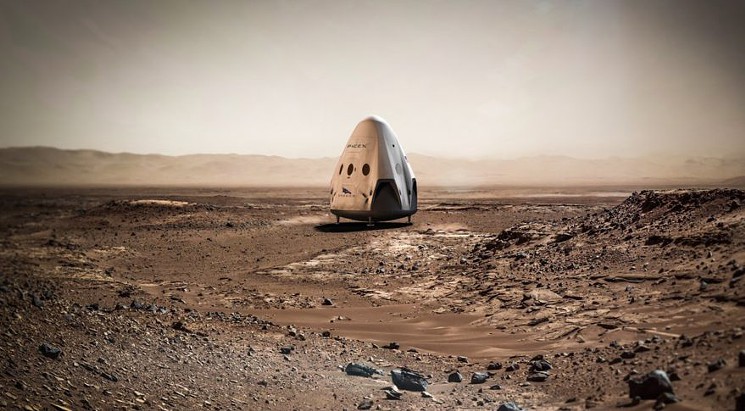The commercial spaceflight company SpaceX announced that it plans to send its robotic Dragon capsule to Mars as early as 2018.
Red Dragon is a planned unmanned SpaceX Dragon capsule for low-cost Mars lander missions to be launched using Falcon heavy rockets. These Mars missions will also be pathfinders for the much larger SpaceX Mars colonization architecture that will be announced in September 2016.
Proposed uses call for a sample return Mars rover to be delivered to the Martian surface while also testing techniques to enter the Martian atmosphere with equipment a human crew could eventually use.
The idea, conceived in 2011, was to propose it for funding in 2013 and 2015 as the United States NASA Discovery mission#13 for launch in 2022, but it was not submitted. On 27 April 2016 SpaceX announced that they will be going forward with the uncrewed mission for a 2018 launch and NASA will be providing technical support
“Red Dragons will inform the overall Mars architecture,” SpaceX representatives tweeted, referring to the company’s eventual plans to set up a colony on Mars — a key goal of SpaceX and its founder, billionaire entrepreneur Elon Musk.
A source familiar with the company’s plans said the first test flight of a Dragon capsule to Mars would demonstrate technologies needed to land large payloads on the Red Planet. That could include supplies and habitats for Martian explorers. In addition, the source said that SpaceX intends to reveal details of its colonization architecture later this year.
The Red Dragon is the first in a series of planned unmanned missions to Mars. Musk is determined to get people to Mars through private space industry and because of their agreement NASA is going along for the ride.
On Friday June 10, Musk told the Washington Post SpaceX will be sending crafts to Mars regularly every two years starting in 2018 because he wants to establish definite cargo routes to the planet. “You can count on it. It’s going to happen every 26 months. Like a train leaving the station,” Musk stated.
Meanwhile, NASA isn’t planning to send people to Mars until the 2030s, but they’ll get all kinds of helpful data on how to do it, a sensible move for a federal space agency that’s always on a tight budget.
Sources:


